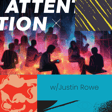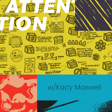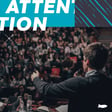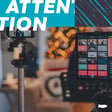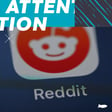
Pioneering a B2B Media Brand To Build Affinity w/Obaid Durrani
Today, I had the privilege of interviewing Obaid Durrani, Head of Content at HockeyStack. We delved into the intricacies of content creation, the importance of having a centralized platform, and the transformative power of data. Join me as we explore these compelling insights from Obaid and learn how you can harness the potential of content creation to captivate your audience, drive engagement, and achieve your marketing goals.
Takeaway #1: Harness the Power of Purposeful Content
Obaid emphasizes the importance of treating content creation as a purposeful endeavor. Each series, whether it's "Worst Marketer in the World" or "Can You Dashboard It?", has a specific objective, whether it be educating people about the product or tying SEO success to demand generation initiatives. By aligning your content creation efforts with clear goals, you can create content that pushes your narrative forward and helps your audience understand your product or brand.
Takeaway #2: Leverage the Right Channels for Maximum Reach
Obaid emphasizes the need to share your content on the right channels to reach your target audience. At HockeyStack, LinkedIn and their platform, The Flow, serve as primary channels for content distribution. By strategically repurposing old posts and cataloging new content, HockeyStack maximizes the reach and impact of its creations. Additionally, Obaid discusses the benefits of having a separate streaming platform—a centralized hub where creators can showcase their work, making it easier for users to search, discover, and engage with specific videos.
Takeaway #3: Embrace Data-Driven Content Creation
Data is the lifeblood of successful content creation, and Obaid highlights the significance of leveraging comprehensive data to optimize your marketing strategy. With platforms like Audience Plus, HockeyStack can track various metrics, including podcast mentions, webinar attendees, sales calls, and content viewership. By using insights from this data, HockeyStack can measure the performance of different series, understand the customer journey, and make informed decisions that propel their marketing efforts forward. This data-driven approach brings clarity and measurable results to your content creation process.






